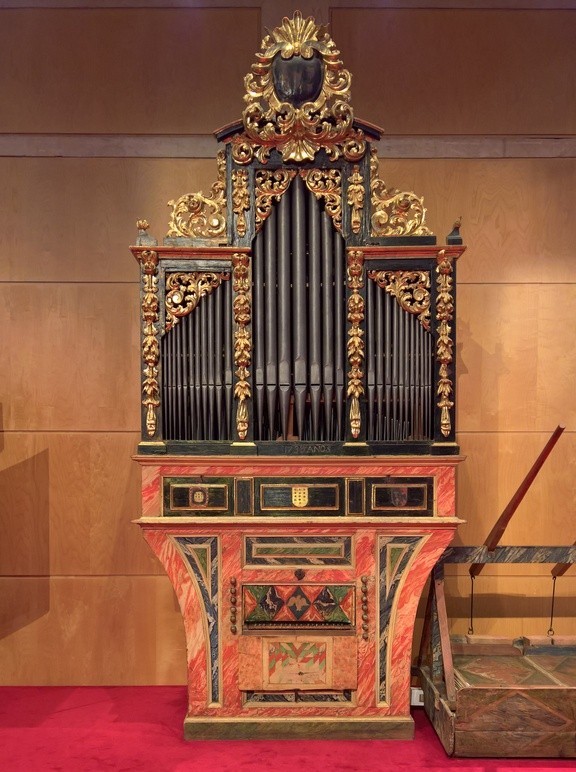
| Aquest és un dels orgues més importants i representatius de la col·lecció del Museu. Prové del convent de monges clarisses de Santa María de Jesús (Àvila), i va ser construït el 1719 per l'orguener Manuel Pérez Molero, responsable també dels orgues de les esglésies segovianes de San Miguel de Turégano (1707), Santa Eulalia (1713) i San Millán (1714) o el convent de Las Gordillas (1720-22). Presenta una decoració molt vistosa amb policromies i diversos escuts heràldics, com el de la fundadora del convent, María Dávila. Té quaranta-cinc tecles en un sol teclat, diversos registres amb tiradors i tres grans manxes externes al lateral. Protagonista de recitals, classes magistrals, sessions tècniques i concerts a càrrec d'intèrprets com Montserrat Torrent, Joan Seguí o Juan de la Rubia, el Pérez Molero segueix en plena forma més de tres-cents anys després de la seva construcció. | This is one of the most important and representative organs in the Museum's collection. It comes from the convent of Poor Clare nuns of Santa María de Jesús (Ávila), and was built in 1719 by the organ builder Manuel Pérez Molero, who was also responsible for the organs of the Segovian churches of San Miguel de Turégano (1707), Santa Eulalia (1713) and San Millán (1714) or the convent of Las Gordillas (1720-22). It has a very colorful decoration with polychromes and several heraldic coats of arms, such as that of the founder of the convent, María Dávila. It has forty-five keys on a single keyboard, several registers with handles and three large external bellows on the side. The protagonist of recitals, master classes, technical sessions and concerts by performers such as Montserrat Torrent, Joan Seguí or Juan de la Rubia, the Pérez Molero is still in top form more than three hundred years after its construction. |
